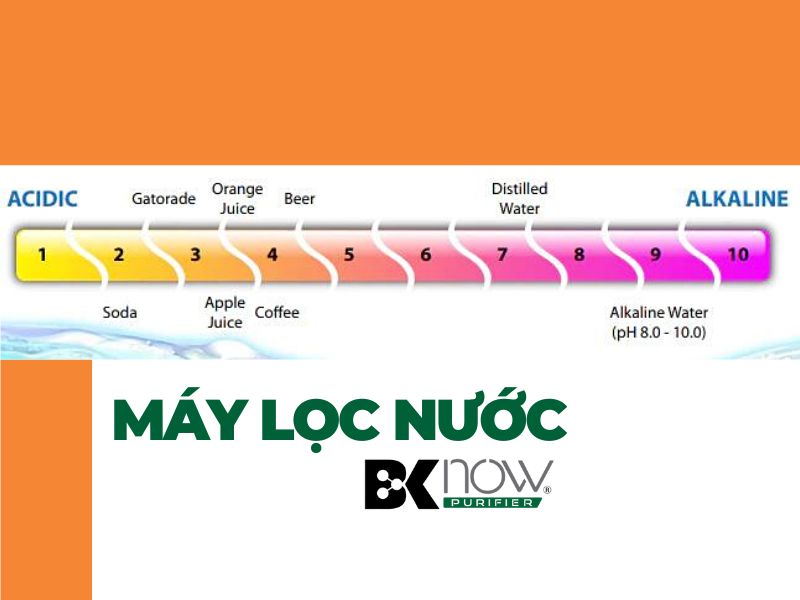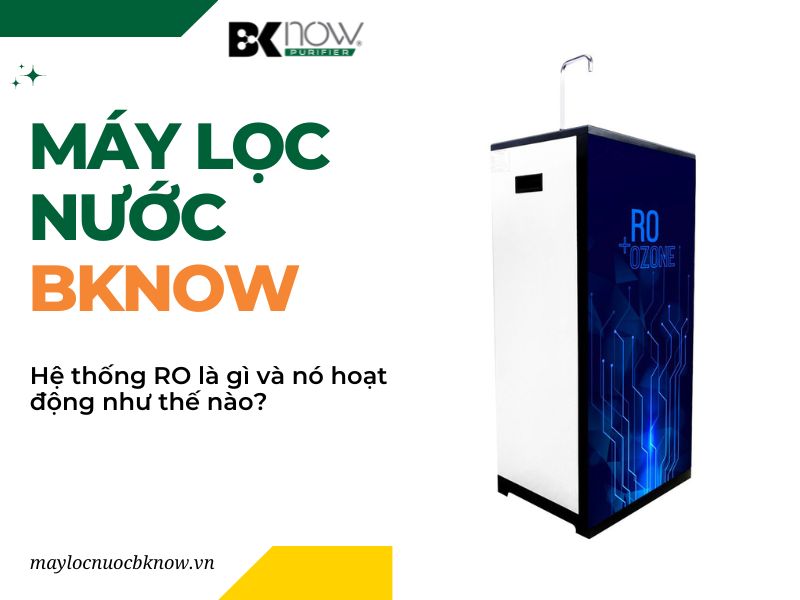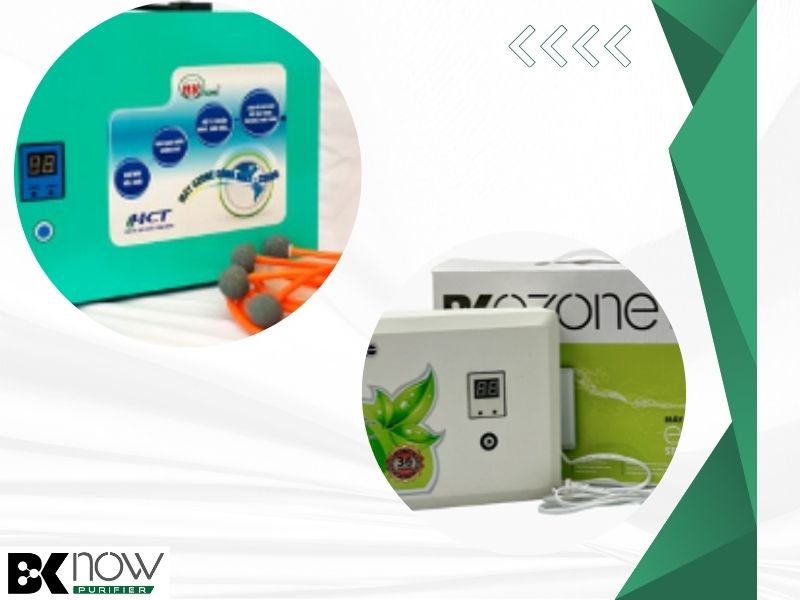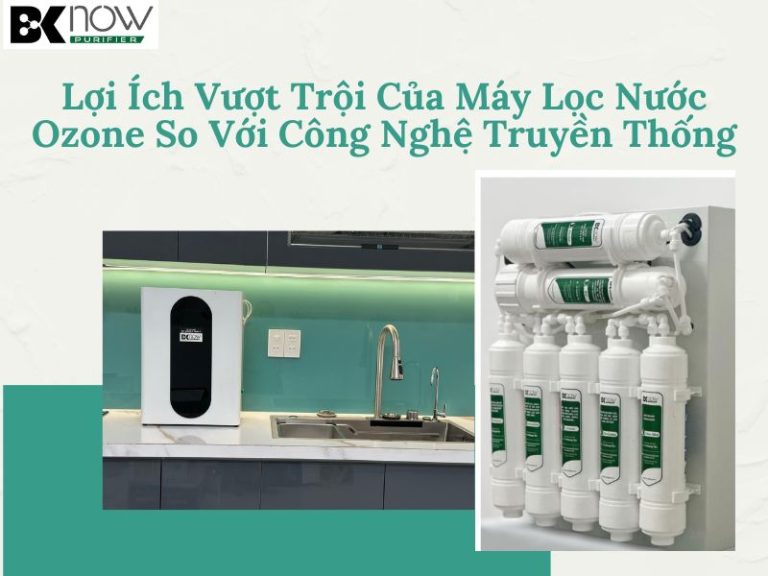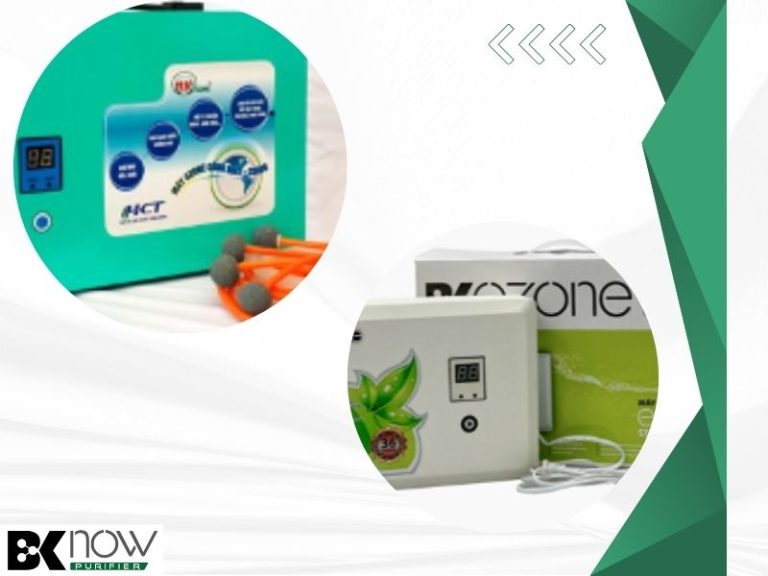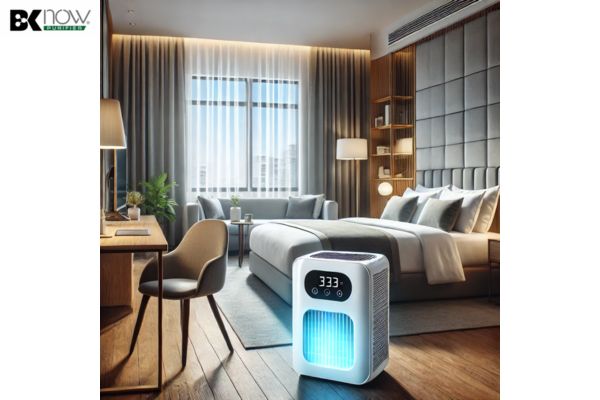Công nghệ RO là gì?
RO (reverse osmosis) -Thẩm thấu ngược loại bỏ chất gây ô nhiễm khỏi nước chưa lọc hoặc nước cấp khi áp suất ép nước đó qua màng bán thấm. Nước chảy từ phía đậm đặc hơn (nhiều chất gây ô nhiễm hơn) của màng RO sang phía ít đậm đặc hơn (ít chất gây ô nhiễm hơn) để cung cấp nước uống sạch. Nước ngọt được tạo ra được gọi là nước thấm. Nước cô đặc còn sót lại được gọi là chất thải hoặc nước muối.
Một màng bán thấm có các lỗ nhỏ ngăn chặn các chất gây ô nhiễm nhưng cho phép các phân tử nước chảy qua. Trong sự thẩm thấu, nước trở nên đậm đặc hơn khi đi qua màng để đạt được trạng thái cân bằng ở cả hai phía. Tuy nhiên, thẩm thấu ngược ngăn chất gây ô nhiễm xâm nhập vào phía ít tập trung hơn của màng. Ví dụ, khi áp lực tác dụng lên một thể tích nước mặn trong quá trình thẩm thấu ngược, muối sẽ bị bỏ lại và chỉ có nước sạch chảy qua. 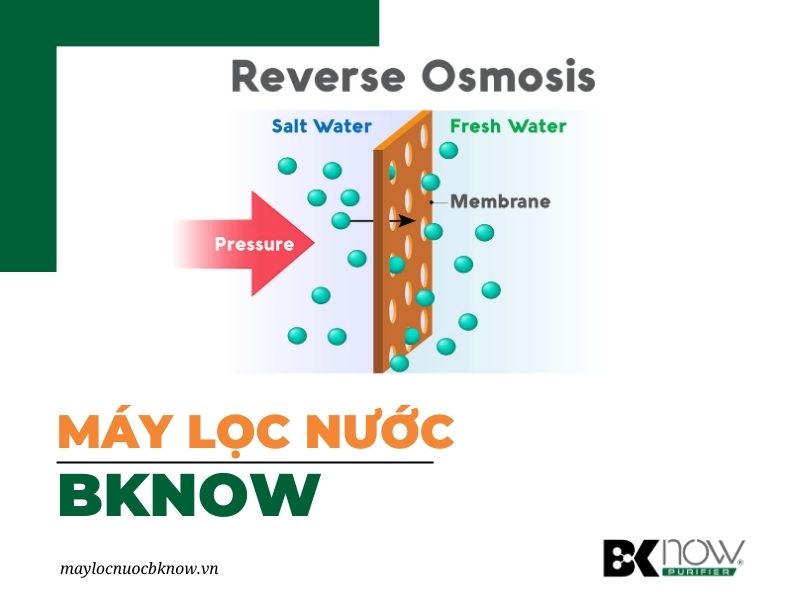
Hệ thống RO (thẩm thấu ngược) hoạt động như thế nào?
Hệ thống thẩm thấu ngược loại bỏ cặn và clo khỏi nước bằng bộ lọc sơ bộ trước khi đưa nước qua màng bán thấm để loại bỏ chất rắn hòa tan. Sau khi nước ra khỏi màng RO, nó sẽ đi qua bộ lọc sau để làm sạch nước uống trước khi đi vào vòi chuyên dụng. Hệ thống thẩm thấu ngược có nhiều giai đoạn khác nhau tùy thuộc vào số lượng bộ lọc trước và bộ lọc sau.
Các giai đoạn của hệ thống RO
Màng RO là tâm điểm của hệ thống thẩm thấu ngược, nhưng hệ thống RO cũng bao gồm các loại lọc khác. Hệ thống RO được tạo thành từ 3, 4 hoặc 5 giai đoạn lọc.
Mọi hệ thống nước thẩm thấu ngược đều chứa bộ lọc trầm tích và bộ lọc carbon ngoài màng RO. Các bộ lọc được gọi là bộ lọc trước hoặc bộ lọc sau tùy thuộc vào việc nước đi qua chúng trước hay sau khi nó đi qua màng.
Mỗi loại hệ thống chứa một hoặc nhiều bộ lọc sau:
- Bộ lọc trầm tích: Giảm các hạt như bụi bẩn và rỉ sét
- Bộ lọc carbon: Giảm các hợp chất hữu cơ dễ bay hơi (VOC), clo và các chất gây ô nhiễm khác khiến nước có mùi vị khó chịu
- Màng bán thấm: Loại bỏ tới 98% tổng chất rắn hòa tan (TDS)
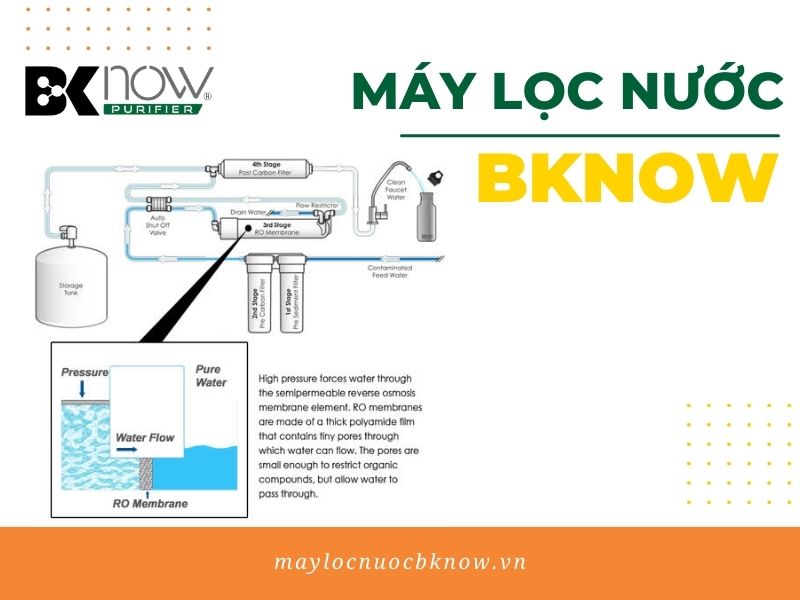
- Khi nước lần đầu tiên đi vào hệ thống RO, nó sẽ trải qua quá trình lọc sơ bộ. Quá trình lọc trước thường bao gồm bộ lọc carbon và bộ lọc cặn để loại bỏ cặn và clo có thể làm tắc nghẽn hoặc làm hỏng màng RO.
- Tiếp theo, nước đi qua màng thẩm thấu ngược, nơi các hạt hòa tan, thậm chí quá nhỏ để có thể nhìn thấy bằng kính hiển vi điện tử, được loại bỏ.
- Sau khi lọc, nước chảy vào bể chứa, nơi nước được giữ cho đến khi cần sử dụng. Một hệ thống thẩm thấu ngược tiếp tục lọc nước cho đến khi bể chứa đầy và sau đó tắt.
- Sau khi bạn bật vòi nước uống, nước sẽ chảy ra khỏi bể chứa thông qua một bộ lọc sau khác để làm sạch nước uống trước khi đến vòi của bạn.
Tại sao bạn cần một bể chứa RO?
Một bể chứa RO chứa nước thẩm thấu ngược để bạn có nhiều nước để sử dụng khi cần. Một hệ thống thẩm thấu ngược làm cho nước từ từ. Phải mất một phút để sản xuất hai đến ba ounce nước RO. Nếu bạn bật vòi để lấy một cốc nước với tốc độ sản xuất màng thực tế, thì bạn sẽ phải đợi ít nhất 5 phút để đầy nước. Với một bể chứa, ly của bạn sẽ đầy ngay lập tức.
Hệ thống RO loại bỏ những gì?
Một hệ thống thẩm thấu ngược loại bỏ các chất rắn hòa tan như asen và florua qua màng RO. Một hệ thống RO cũng bao gồm lọc trầm tích và carbon để giảm phổ rộng. Các bộ lọc carbon trong hệ thống RO loại bỏ clo, mùi vị và mùi khó chịu, và bộ lọc trầm tích loại bỏ bụi bẩn và mảnh vụn
Hệ thống RO có loại bỏ…
- Florua? Có.
- Muối? Có.
- Trầm tích? Có..
- Clo? Có.
- Thạch tín? Có.
- VOC? Có.
- Thuốc diệt cỏ và thuốc trừ sâu ? Có.
- Nhiều chất gây ô nhiễm khác? Có. Các chất gây ô nhiễm được liệt kê là một số chất phổ biến nhất được xử lý bằng hệ thống RO, nhưng hệ thống này cũng loại bỏ một loạt các chất gây ô nhiễm khác.
- Vi khuẩn và Vi-rút? Không. Nếu nước của bạn đến từ một nhà máy xử lý nước của thành phố, thì nước đó phải an toàn về mặt vi sinh. Thẩm thấu ngược có thể loại bỏ một số vi khuẩn, nhưng vi khuẩn có thể phát triển trên màng và có khả năng xâm nhập vào nguồn nước của bạn. To remove living organisms and viruses, we recommend UV disinfection.
Lợi ích của hệ thống lọc RO
Một hệ thống thẩm thấu ngược là một trong những phương pháp lọc rộng rãi nhất. Nó loại bỏ 98% chất rắn hòa tan, giúp uống lành mạnh hơn. Máy chưng cất nước là hệ thống nước uống duy nhất khác cũng làm giảm TDS, nhưng nó kém hiệu quả hơn hệ thống RO.
- Harmful dissolved contaminants reduced
- Sodium reduced
- Bad tastes and odors reduced
- More environmentally friendly than bottled water
- Easy to install and maintain
- Fits under the kitchen sink
Browse Reverse Osmosis Systems
Does reverse osmosis waste water?
A reverse osmosis system sends water with rejected contaminants down the drain as wastewater, unlike other filters that trap contaminants. As water flows through the system, it’s divided into two streams. One stream carries the filtered water to a dedicated faucet, and the other stream carries the removed salts, dissolved pollutants, and minerals to the drain.
The brine or “wastewater” carries rejected contaminants from a reverse osmosis system to the drain. 4 gallons of water exits the drain for every gallon of water produced. But the brine water is used for a purpose, so it’s not exactly wasted. The wastewater in an RO system helps clean the water, just like a dishwasher uses water to clean dishes or a washing machine uses water to clean clothes. However, it’s our job in caring for the environment to minimize the amount of water sent to the drain and increase the efficiency of the RO system.
How to reduce wastewater in an RO system
- Add a permeate pump. Installing a permeate pump to a reverse osmosis system is the best way to increase its efficiency. Permeate pumps reduce the wastewater from an RO system by 75 to 80%. Not every reverse osmosis system is designed to use one, so make sure the one you choose is plumbed for an additional pump.
- Choose an RO system with an automatic shut off valve. An ASO valve stops the flow of water to the drain once the storage tank is full.
- Use the RO reject water for landscaping or artificial lakes. Drain water has higher levels of total dissolved solids (TDS), but it’s safe to use in your lawn or garden.
The Neo-Pure 4300 DLX is one of the most efficient RO systems because it includes a permeate pump and an ASO valve.
Is reverse osmosis good for the environment?
When the water you use drains from your home, chemicals and other contaminants must be removed before it’s recycled. Wastewater is either sent to a water treatment plant and diluted to make it easier to treat or to riverbeds for nature to filter through the hydrologic cycle.
A reverse osmosis system makes waste treatment more efficient. Reverse osmosis water drained from your home is already free of chemicals since they’ve been removed in the carbon filtration stage. The leftover brine water has just a slightly higher concentration of dissolved inorganics. RO systems speed up the recycling process because no new chemicals are introduced into the water supply after RO water drains from your house.
Reverse osmosis vs. bottled water
Most bottled water is purified through reverse osmosis, but producing bottled water wastes more water than a reverse osmosis system. Think about all the water required to make one bottle of water. When bottled water is purified, wastewater is sent to the drain, and producing the bottle uses water and petroleum. Petroleum is used again to deliver the bottled water to the store. Afterward, the truck may get washed, using even more water. A reverse osmosis system provides water just as pure as bottled water that tastes just as refreshing without as great of a cost to the environment.
Reverse osmosis also has the added benefit of perpetually producing highly purified water in your home. There is no need to run out to the grocery store to stock up on expensive and wasteful cases of bottled water. A reverse osmosis system produces bottled water quality hydration in the comfort of your kitchen. You can even fill stainless steel water bottles with RO water and store them in your fridge, so you can enjoy all the conveniences of bottled water without the disposable single-use plastic bottles and weekly grocery runs.
Is reverse osmosis water good for you?
A reverse osmosis water system removes dissolved contaminants that you can’t see but that could make you sick. Reverse osmosis does work for your kidneys by filtering water before it enters your body. It also removes beneficial minerals like calcium and magnesium from water, but that does not make reverse osmosis water bad for you.
Our bodies are 70-80% water that hydrates, lubricates joints, and aids organ function. You don’t need minerals to do those things. You would have to drink excessive amounts of water for your body to absorb enough mineral content to make a significant difference. Food is the primary source of essential nutrients, not water. If you want more minerals, eat your fruits and veggies.
Some mineral content is fine to drink, but the EPA recommends that the amount of TDS in water not exceed 500 parts per million. A large portion of the U.S. has TDS levels that exceed this level and could benefit from an RO system.
Where to use a reverse osmosis system
Under the sink? Yes.
Reverse osmosis is most commonly installed at the point of use (POU), like under a kitchen or bathroom sink. A point-of-use RO system could also be mounted in a cabinet or remotely in the garage or basement.
For a refrigerator? Yes.
Connecting an under-sink reverse osmosis system to your refrigerator is simple and worthwhile. Reverse osmosis removes minerals from water, making your ice clear and beverages more refreshing.
For the whole house? Rarely.
Reverse osmosis can be used to treat water for the whole house. However, unless your water has a specific contaminant that requires reverse osmosis, using an RO system may be over-kill. An RO system solves specific problems like saltwater intrusion in a well or high levels of silica in the water.
An RO system will not provide the flow rate needed to pressurize an entire house. In the rare case where a whole house requires RO water, a large booster pump, like a Grundfos or Davey, provides adequate water pressure. In addition to a large water pump and storage tank, a UV system is needed to disinfect the water once it leaves the tank.
Homeowners have a lot to consider when purchasing an RO system for the whole house. If your water quality is dire enough to warrant whole house reverse osmosis, you likely have other water quality issues that will need to be addressed prior to the water reaching the RO membrane. High levels of water hardness will cause scale build-up on the membrane, reducing its performance and causing it to fail prematurely. Contaminants like iron can also foul the membrane and will need to be eliminated from the water before being treated by the reverse osmosis system.
If you believe your water quality may require whole house reverse osmosis to treat, check out our in-depth guide on whole-house reverse osmosis systems. | Explore how water booster pumps work.
For showers? No.
If you don’t want to purchase a storage tank larger than your basement, reverse osmosis is not the best option for your shower. The solution is usually much simpler and more focused than reverse osmosis. Shower water with high levels of chloramines can cause nose and eye irritation and aggravate skin conditions. Chloramines are best removed by a whole house catalytic carbon filter.
Hard water can also lead to unsatisfying showers. Soap does not lather well in water with elevated mineral content, and hard water can leave hair feeling lifeless and dull. An ion exchange water softener will eliminate these contaminants.
For pools? No.
The only time you may need an RO system for a pool is if the water contains some contaminant that no other filtration system can remove. If you try to fill a 20,000-gallon pool with RO water, even with the most efficient system, you will send 10,000 gallons down the drain. Good news: the amount of dissolved solids in a pool doesn’t really matter, so other systems do a better job providing clean pool water.
For agriculture? Sometimes.
Reverse osmosis works well for hydroponic farming, but not all plants survive or thrive with RO water. RO is best suited for greenhouses where plants are misted or in small gardens, depending on the types of plants. Since hydroponic farming eliminates soil, and instead nurtures fruits and flowers with only nutrient-rich water, high-quality water is paramount to hydroponic success. Even small amounts of sediments, salts, and dissolved organics can upset the delicate balance of the plant life. RO water allows for total control over your plants nutrient intake.
Explore how to use reverse osmosis water for hydroponics. | Learn more about how hydroponic systems work.
For wells? Yes.
If you get your drinking water from a private well, then an RO system is an excellent way to ensure that the water flowing to your tap is safe. A reverse osmosis system is a perfect way to remove difficult contaminants often found in well water, like nitrates.
In apartments? No.
One point-of-entry unit usually supplies water to an apartment building or condominium, and installing an under-sink system is often not allowed. A countertop filter system is the best option in an apartment.
| If you’re looking to invest in a countertop filter, explore our countertop filter buyer’s guide. |
At businesses? Yes.
Commercial or industrial reverse osmosis systems are common because commercial units allow drain water to be sent back into the feed supply. Reverse osmosis removes paints, dyes, and other industrial contaminants well.
For an aquarium? Yes.
If you’re a saltwater fish enthusiast, then an RO system is perfect for you. Reverse osmosis allows you to strip all minerals from the water and add exactly the amount of salt you need back in with a remineralizing filter. Most aquarists rely on a combination of reverse osmosis and deionization (known as RO/DI water) to ensure their fish are immersed in highly pure water, modified to match the fish’s natural environment.
| Learn more about why you should use reverse osmosis water in your aquarium. |
In RVs? Yes.
RO systems require proper draining. Storage tanks are difficult to attach to RVs because drain hookups aren’t located at campsites, but it is possible. A reverse osmosis system can be very helpful for those whose RV adventures take them into more remote, wilderness locations. A combination of RO and ultraviolet disinfection can make sure the water you are drinking is free from harmful bacteria and particulate matter.
| Explore our RV water filters buyer’s guide. |
Reverse osmosis system vs. a water softener
Unlike a reverse osmosis system, a water softener does not filter harmful contaminants from water. It removes calcium and magnesium to soften hard water and make washing clothes and showering easier.
Water is softened during reverse osmosis. However, using a reverse osmosis system to treat hard water (above 7 grains) shortens the life of the RO membrane. This will lead to more frequent membrane replacements. If you have hard water, use a water softener to treat it instead.
Reverse osmosis systems and water softeners benefit each other. A water softener installed before the RO system removes iron from the water that can stain your shower, clothes, and toilet orange and clog the RO membrane. An RO system removes sodium added by the water softener.
| Learn more about how water softeners work. |
How long do reverse osmosis systems last?
Reverse osmosis systems usually last between 10 and 15 years. While the systems themselves have a long lifespan, the RO membrane and filters need replacing periodically. The prefilters and post filters should be changed every 6 months to 1 year. Depending on your water conditions, the RO membrane should be replaced every 2-4 years.
Here are a few tips to help you maintain your reverse osmosis system.
If your RO system isn’t working properly, this RO Troubleshooting Guide will help you find and fix the problem.
8 things to consider when buying an RO system
1. Water source
The water that enters your home feeds the reverse osmosis system. City water or municipally treated water is relatively free of chemicals and bacteria but may contain inorganic dissolved solids, which an RO system is designed to reduce. Private well water could contain harmful pathogens and chemicals in addition to dissolved solids.
Reverse osmosis systems can treat both city and well water, as long as the well water has been pretreated for bacteria and particles that could clog the membrane. If you’re on well water contaminated with heavy metals like arsenic, then you may need a UV system to disinfect the water once it leaves the storage tank.
2. Water demand
Consider how much water you and your family are going to use. Every person, according to nutritionists, should drink half their weight in ounces every day. So, if you weigh 160 pounds, then you should be drinking 80 ounces of water per day. You also have to take water used in ice machines, refrigerators, and all your other appliances into account. Each reverse osmosis system provides the amount of water produced each day, measured in GPD (gallons per day).
3. Water pressure
Reverse osmosis uses water pressure to force clean water through the membrane. If your household water pressure is below 40 psi, then you need to increase the pressure for reverse osmosis with an RO booster pump. If you’re on well water supply, make sure your tank’s water pressure is set high enough for an RO system to work. A high level of dissolved solids in water also increases the amount of pressure needed for the RO system to produce clean water.
A residential reverse osmosis system is point-of-use, which means you install it right where you need the RO water. Most RO systems install directly under your sink. Whole house reverse osmosis systems are used less often because they require a large storage tank and booster pump for adequate pressure to supply water to every point in your house.4. RO style
Reverse osmosis systems come three different cartridge styles: quick-change, drop-in, and standard. Your choice of filter style depends on whether you prefer easy maintenance, low maintenance cost, or the least environmental impact.
Quick-change cartridges: simplest to maintain, but also the most expensive and the least environmentally friendly.
Quick-change filters are easy to replace. Simply twist the filter and pull it out. Then, take the new filter and turn it in the opposite direction to replace the old one. However, the ease of maintenance comes with a high price tag, and the filter cartridges are made of plastic that gets wasted every time an old filter is discarded.
Drop-in and standard cartridges: More difficult to replace, but also the least expensive and most environmentally friendly.
To replace a drop-in or standard filter, unscrew the housing, throw the filter cartridge away, put a new cartridge in, and put the housing back in its place. Standard filters can be replaced with compatible cartridges, but drop-in systems require exact replacements.
Reverse osmosis systems also come in different stages, usually three, four, or five, based on the number of prefilters and postfilters included. The RO membrane does most of the work removing dissolved solids, but additional prefilters and postfilters can polish, re-mineralize, and provide additional chlorine and sediment removal. Eventually, the membrane wears out, but prefilters give an initial pass through filter media to help extend the life of the membrane.
5. Budget
When budgeting for a reverse osmosis system, you have several factors to consider: How much does the system cost? How much will installation cost, especially if you hire someone? How much does on-going maintenance cost? These factors may affect which RO system you choose or whether or not you use one at all.
The price of a reverse osmosis system varies depending on whether you need one under your sink or for your whole house and how many additional components you need. Whole house RO systems are much more expensive and complex. Under-sink RO systems usually range from $200 to $400 depending on the style. The cost increases if the system includes a booster pump, permeate pump, storage tank, or pretreatment.
Installing any RO system is an investment that requires on-going maintenance costs, including replacement filters and membranes. The replacement cost and frequency depend on your style of an RO system. Generally, the RO membrane needs replacing every two years, and the filters need replacing every six months to one year. The reverse osmosis system itself lasts twenty years or longer with proper care.
Factors that influence the cost of an RO system:
- Type of system
- Pretreatment
- Installation cost
- Maintenance cost
- Additional components
6. Ease of Installation
Most under-sink reverse osmosis systems are easy to install. However, installing an under-sink RO system requires a dedicated faucet, which means you may have to drill a hole in your countertop. If you’re not comfortable doing this job yourself, then you may need assistance from a plumber or a handy friend or family member.
Reverse osmosis systems must have a dedicated faucet and a drain connection to prevent the dirty drain water from flowing back into the clean drinking water. An RO system cross-connects the drain line and the water line. Plumbing code requires that cross-connections have an air gap faucet that allows drain water to pass through without returning to the clean water.
Learn how to fix an air gap leak.
Consult a water specialist before installing a whole house reverse osmosis system to make sure there’s not a simpler, equally effective solution and to make sure you apply proper pretreatment based on your water conditions.
7. Efficiency
A reverse osmosis system is not the most efficient filter. After reverse osmosis filters contaminants, it sends them to the drain with a significant amount of water. However, this water is not exactly wasted since it’s used to carry contaminants away and make potable water.
Standard water filters collect contaminants on their surface, but the RO membrane stops them and uses water to carry them to the drain. Adding a permeate pump to your RO system makes it 85% more efficient. The permeate pump uses the wastewater as energy to send clean water to the storage tank. The most environmentally friendly RO systems include a permeate pump or allow you to add one.
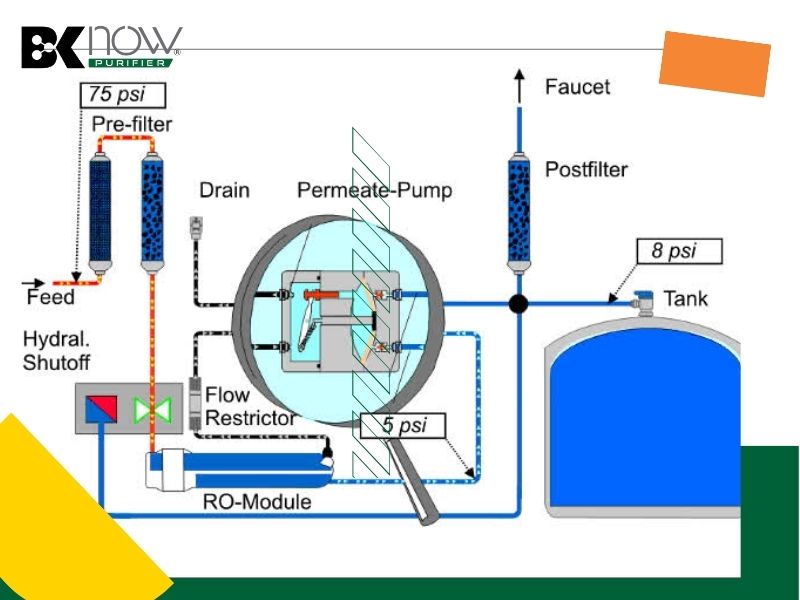
8. Remineralization
Reverse osmosis removes dissolved solids from water and reduces alkalinity or lowers water’s pH in the process. The lower pH makes the water slightly acidic. Acid water is corrosive, but adding an acid-neutralizing filter, like a calcite filter or alkaline water filter, increases the pH and adds mineral flavor. The Aptera filter dissolves calcium and magnesium in water and reduces scale, microorganisms, and sediment through several stages of remineralization.
